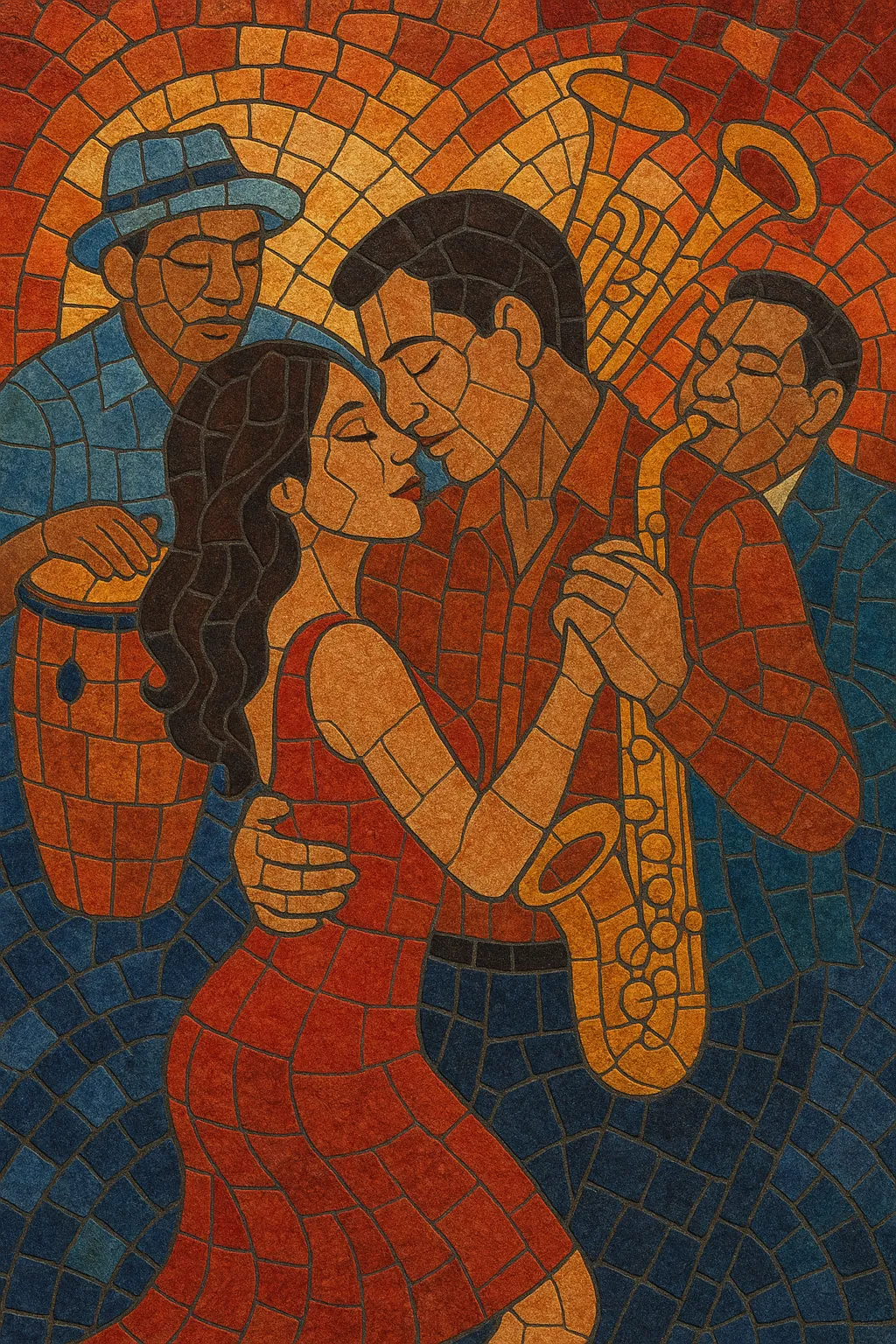
Salsa romántica is a smoother, pop-leaning branch of salsa that foregrounds love, longing, and sensuality. It keeps the core Afro-Caribbean rhythmic engine—clave, tumbao bass, and montuno piano—but presents it at gentler tempos with lush horn lines, string pads, and polished studio production.
Emerging in Puerto Rico and the Puerto Rican diaspora (especially New York and Miami) in the early-to-mid 1980s, the style transformed salsa’s social reach by aligning it with Latin pop and the romantic ballad. Its songs are typically verse–chorus constructions with memorable hooks, coro–pregón exchanges, and short, tasteful mambos rather than extended improvisations.
Salsa romántica appeared as a response to salsa dura’s gritty street realism and dense, improvisatory format. Puerto Rican artists and bandleaders in Puerto Rico, New York, and Miami began blending the rhythmic language of salsa with the lyrical sensibility and melodic contours of the bolero and the contemporary Latin ballad. Early experiments slowed the tempo, simplified arrangements, and spotlighted intimate, emotive vocals.
By the mid-1980s, singers such as Frankie Ruiz, Eddie Santiago, Lalo Rodríguez, and Willie González popularized the style across the Caribbean and US Latin markets. Radio programmers and labels promoted the more romantic image, helping the music cross over to audiences who preferred polished pop production. While some traditionalists derisively called it “salsa monga,” the new sound quickly dominated charts and club floors.
In the 1990s, labels like RMM (Ralph Mercado) and producers/arrangers such as Sergio George refined the sonic template—bright brass, tight rhythm sections, glossy mixes—powering hits by Gilberto Santa Rosa, Jerry Rivera, La India, Marc Anthony, and Víctor Manuelle. Songwriters like Omar Alfanno supplied radio-ready material. Salsa romántica became the commercial face of salsa worldwide, shaping how television, film, and major festivals presented the genre.
Although later trends (timba, reggaeton, bachata urbana) contested market share, salsa romántica remains a staple of Latin stations, weddings, and ballrooms. Its repertoire continues to renew itself through updated production aesthetics, collaborations with pop and urban artists, and enduring catalog staples that sustain social dancing and romantic storytelling.

